BRICK BAT COBA MEHTODOLOGY AS PER CPWDOn deciding the correct quantity of water required, the slurry shall be prepared by mixing 1.289 kg/m2 of grey cement + 0.67 kg./sqm. of Water Proofing Compound +1.289 kg./sqm. of coarse sand + x litres of water. Slurry shall be prepared for the area to be covered within half an hour of mixing. The consistency of the slurry shall be such that in one application with a brush 1.5 mm thickness of slurry can be coated on the fibre glass cloth surface. This slurry shall be applied evenly on the entire surface covered with fibre glass cloth so that a layer of 1.50 mm thickness of slurry is formed. The application of slurry shall be continued over the 300 mm portion of parapet wall and also the portion tucked in the groove on top. The entire surface shall be allowed for air curing for 4 hours and later the surface shall be cured with clean water for 7 days. On completion of curing the grooves where the fibre glass cloth is tucked shall be closed neatly with cement mortar mixed with water proofing compound and the repaired surface should be cured by clean water for 7 days. Fourth and final layer of brick tiling if required shall be laid and paid for separately. 22.6.6 Measurement Length and breadth shall be measured along the finished surface correct to a cm and area shall be worked out to nearest 0.01 sqm. Overlaps and tucking in a flashing grooves shall not be measured. No deductions shall be made for openings or recess or chimney stack, roof lights or Khurras of area upto 0.40 sqm, nor anything extra shall be paid for forming such openings, recess etc. For area exceeding 0.40 sqm. deduction will be made in the measurement for the full opening and nothing extra shall be paid for making such opening. 22.6.7 Rate The rate shall include the cost of labour and material involved in all the operations described above, however the cost of brick layer with cement mortar shall be paid for separately. 22.7 INTEGRAL CEMENT BASED WATER PROOFING TREATMENT WITH BRICK BAT COBA (Fig. 22.6) 22.7.1 Before taking up the work the preliminaries to be attended shall be exactly same as described in clause 22.6.1. 22.7.2 Preparing the Surface The surface of the slab should be roughened by scrapping when the slab concrete is still green, however, the surface need not be hacked. In case the slab is already cast and surface fairly finished, the same shall be cleaned neatly of all mortar droppings, loose materials etc with brooms/cloth. 22.7.3 Providing and Laying of Slurry under Base Coat The quantity of water required to prepare the slurry with 2.75 kg. of blended cement to be painted over an area of 1 sqm. shall be calculated exactly as described in clause 22.5.3. Depending upon the area of surface that has to be covered, the required quantity of slurry should be prepared using 2.75 kg. blended cement + water per sqm. area to be covered, taking particular care to see that only that much quantity of slurry shall be prepared which can be used within half an hour of preparation i.e. before the initial setting time of cement.The prepared slurry shall be applied over the dampened surface with brushes very carefully, including the joints between the floor slab and the parapet wall, holes on the surfaces, joints of pipes, masonry/concrete etc. The application of the slurry should continue upto a height of 300 mm on the parapet wall and also the groove as shown in Fig. 22.6. The slurry should also be applied upto a height of 150 mm over pipe projections etc. 22.7.4 Laying Base Coat 20 mm thick Immediately after the application of slurry and when the application is still green, 20 mm thick cement plaster as base coat with cement mortar 1:5 (1 blended cement : 5 coarse sand) shall be evenly applied over the concrete surface taking particular care to see that all the corners and joints are properly packed and the application of the base coat shall be continued upto a height of 300 mm over the parapet wall. 22.7.5 Laying Brick Bat Coba Brick bat of size 25 mm to 115 mm out of well burnt bricks shall be used for the purpose of brick bat coba. The brick bats shall be properly dampened for six hours before laying. Brick bats shall be laid to required slope/gradient over the base coat of mortar leaving 15-25 mm gap between two bats. Cement mortar 1:5 (1 blended cement: 5 coarse sand) shall be poured over the brick bats and joints filled properly. Under no circumstances dry brick bats should be laid over the base coat. The haunches/gola at the junction of parapet wall and the roof shall be formed only with brick bat coba as shown in Fig. 22.6. In case the brick bat coba is laid on the base coat immediately on initial set there will be no necessity of applying cement slurry over the base coat before laying the brick bat coba. However, if the brick bat coba is to be laid on the subsequent day, cement slurry prepared as described in clause 22.7.3 shall be applied over the top surface of the base coat, then only the brick bat coba shall be laid. 22.7.6 Application of Slurry over Brick Bat Coba After two days of curing of brick bat coba cement slurry prepared as per clause 22.7.3 shall be applied on the surface of brick bat coba The application of slurry shall be the same as described in clause 22.5.3 which should cover the haunches/gola, and the remaining small portion of parapet wall and also inside the groove as shown in the figure. 22.7.7 Laying Finishing Layer (Protective Coat) Immediately on applying the cement slurry over the surface of the brick bat coba and when the slurry applied is still green, the fibre glass cloth as specified in clause 22.6.4 shall be spread evenly on the surface without any kink & pressed to see that no air spaces exist. The fibre glass cloth shall be taken up to a height of 300 mm on parapet walls & tucked in the groove specially prepared at that height. 20 mm thick layer of cement plaster, without leaving any joints shall be applied with cement mortar 1:4 (1 blended cement: 4 coarse sand) over the entire fibre glass cloth including the haunches/ gola and the small portion on the parapet wall. The groove in the parapet wall over the haunches shall also be filled neatly packing the mortar firmly in the groove. The surface of the finishing layer (protective coat) shall be neatly finished with cement slurry prepared as per clause 22.7.3. The finished surface shall be allowed to dry for a while and then pattern of 300 mm x 300 mm groove, 8 mm deep shall be made over the entire surface.22.7.8 Curing and Testing the Treatment The entire surface thus treated shall be flooded with water by making kiaries with weak cement mortar, for a minimum period of two weeks. 22.7.9 Measurement The measurement shall be taken along the finished surface of treatment including the rounded and tapered portion at junction of parapet wall. Length and breadth shall be measured correct to a cm and area shall be worked out to nearest 0.01 sqm. No deduction in measurement shall be made for openings or recesses or chimney stacks, roof lights or khurras of area upto 0.40 sqm., nor anything extra shall be paid for making such openings, recesses etc. For areas exceeding 0.40 sqm., deduction will be made in the measurements for the full openings and nothing extra shall be paid for making such openings. 22.7.10 Rate The rate shall include the cost of all labour and materials involved in all the operations described above. 22.8 WATER PROOFING TREATMENT WITH BITUMEN FELT 22.8.0 Water proofing treatment with self finished felt shall be four courses or six courses as described in the item. Four course water proofing treatment with self finished felt is a normal duty treatment suitable for buildings where the cost of roof treatment is required to be restricted. Six course water proofing treatment with self finished felt is a heavy duty treatment suitable for important structures. 22.8.1 Materials 22.8.1.1 Self finished felt (Appendix A and B) shall conform to the type and grade given in the description of the item. This shall be one of the following types: (i) Type 3 grade 1 hessian base felt conforming in all respects to IS 1322. (ii) (iii) Type 2 grade 1 fibre base bitumen felt conforming to IS 1322. Type 2 grade 2 glass fibre base felt conforming in all respects to IS 7193. 22.8.1.2 Bonding Materials: This shall consist of blown type petroleum bitumen conforming to IS 702 or residual petroleum bitumen conforming to IS 73. The bonding material shall be so selected as to withstand the local condition of temperature and gradient satisfactorily. The penetration of bitumen used shall not exceed 40 in any case. Suitable residual type petroleum bitumen of penetration 30/40 (IS grade S-35), residual type petroleum bitumen with higher penetration and low softening point and suitable blown type petroleum bitumen of IS grade 85/25 or 90/15 of approved quality shall be used. Where proprietary brands of bonding materials are proposed to be used they shall conform in all respects to the specifications in the preceding paras.METHODOLOGY PREPARED BY SUHAIL KHAN
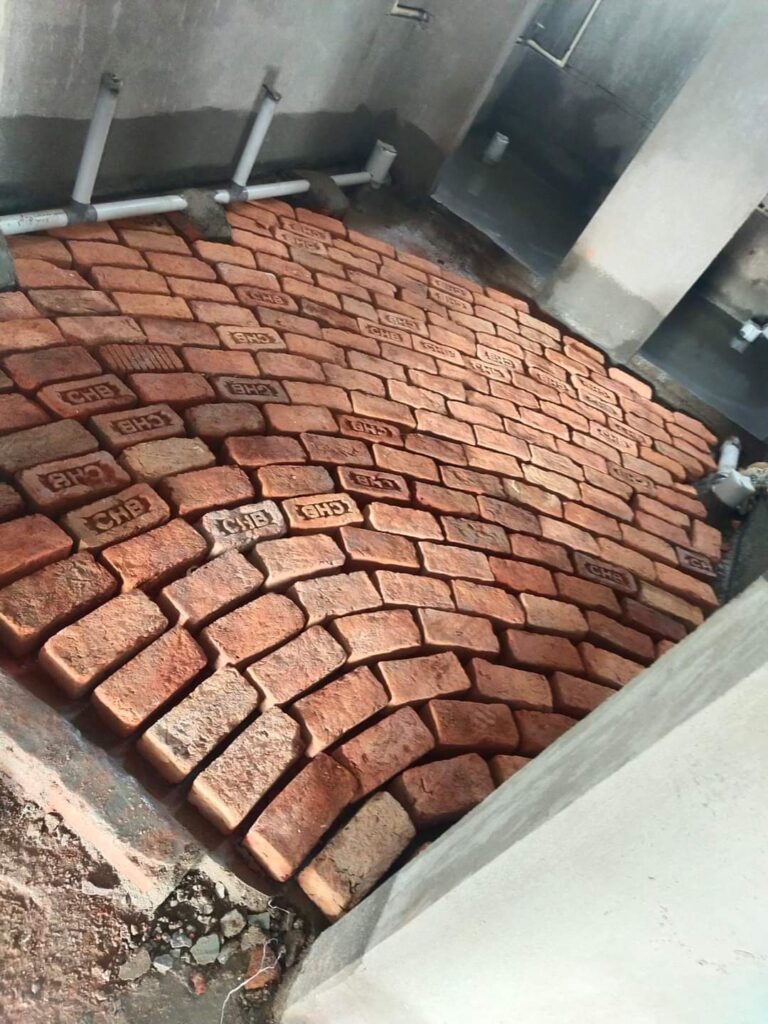
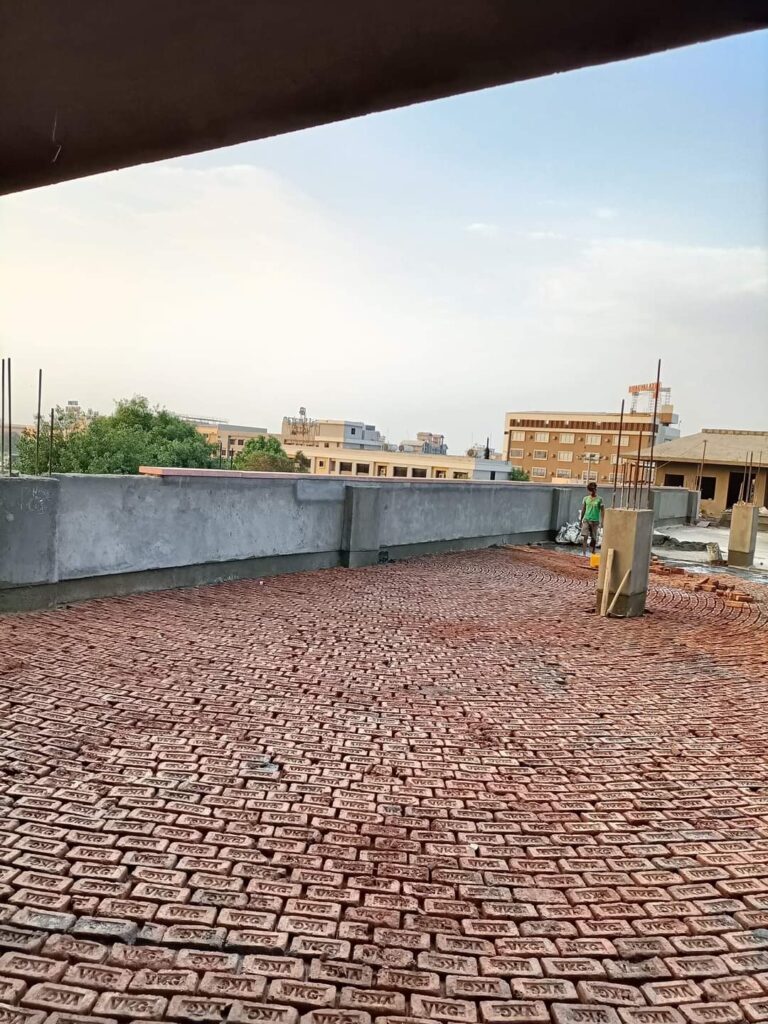
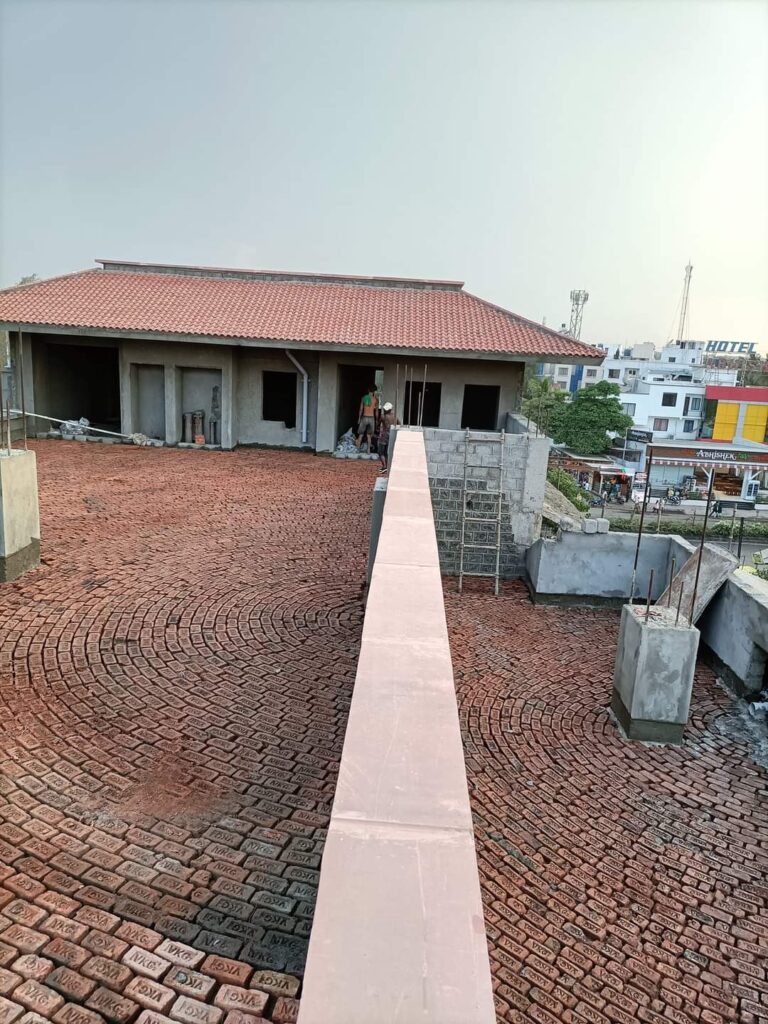
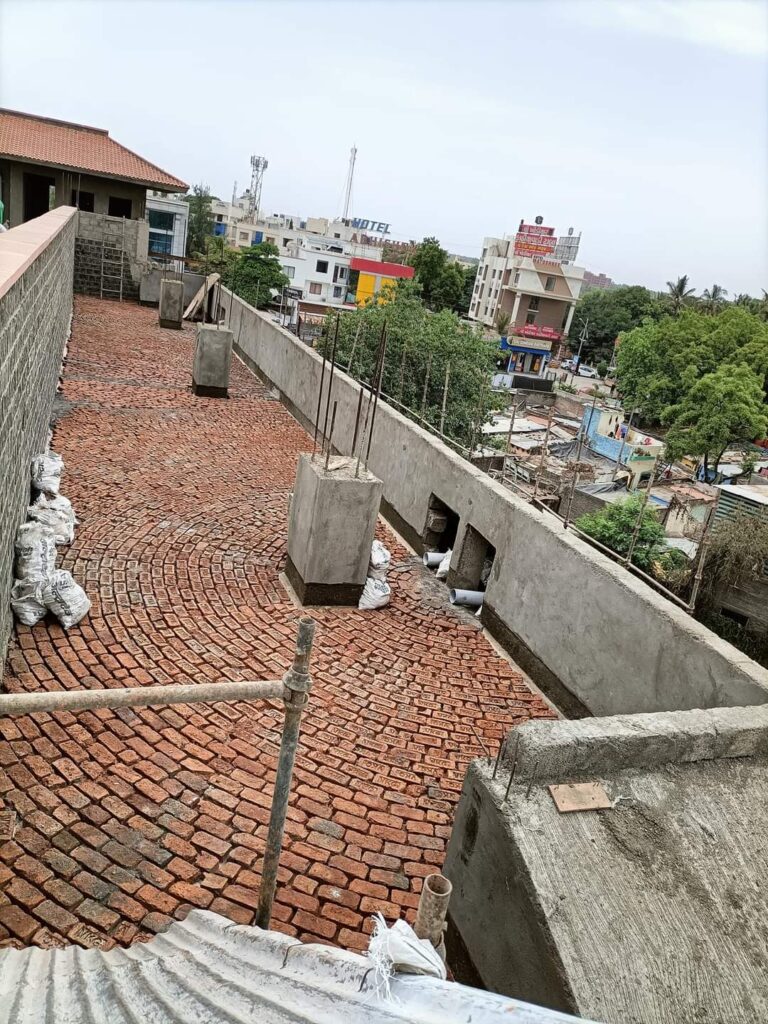
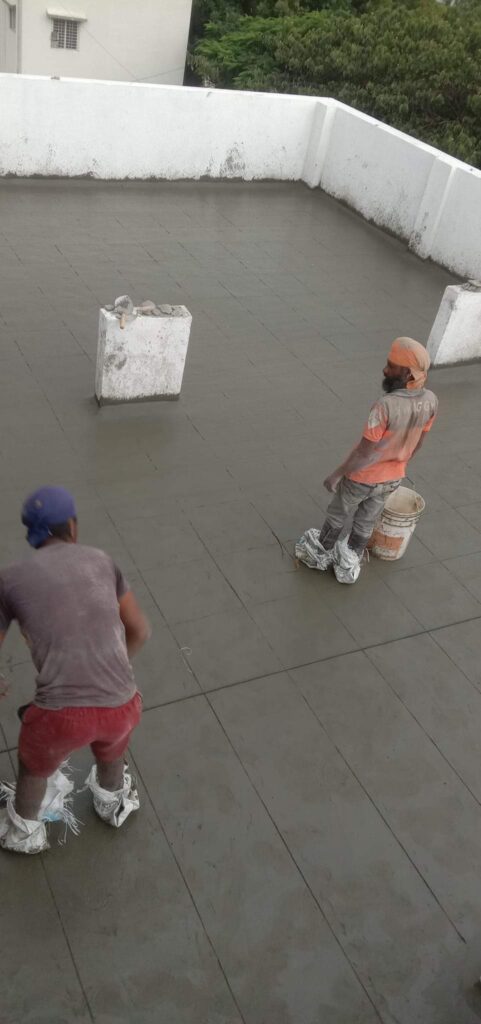
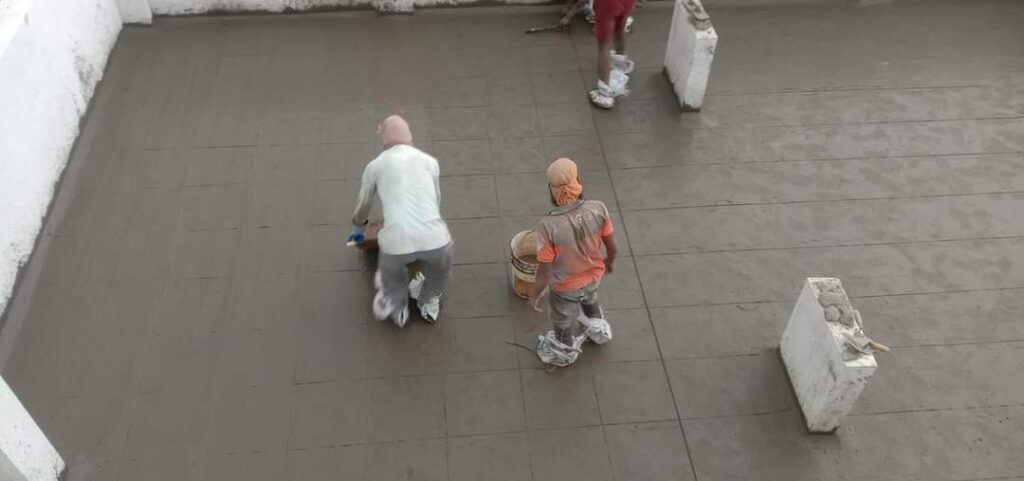
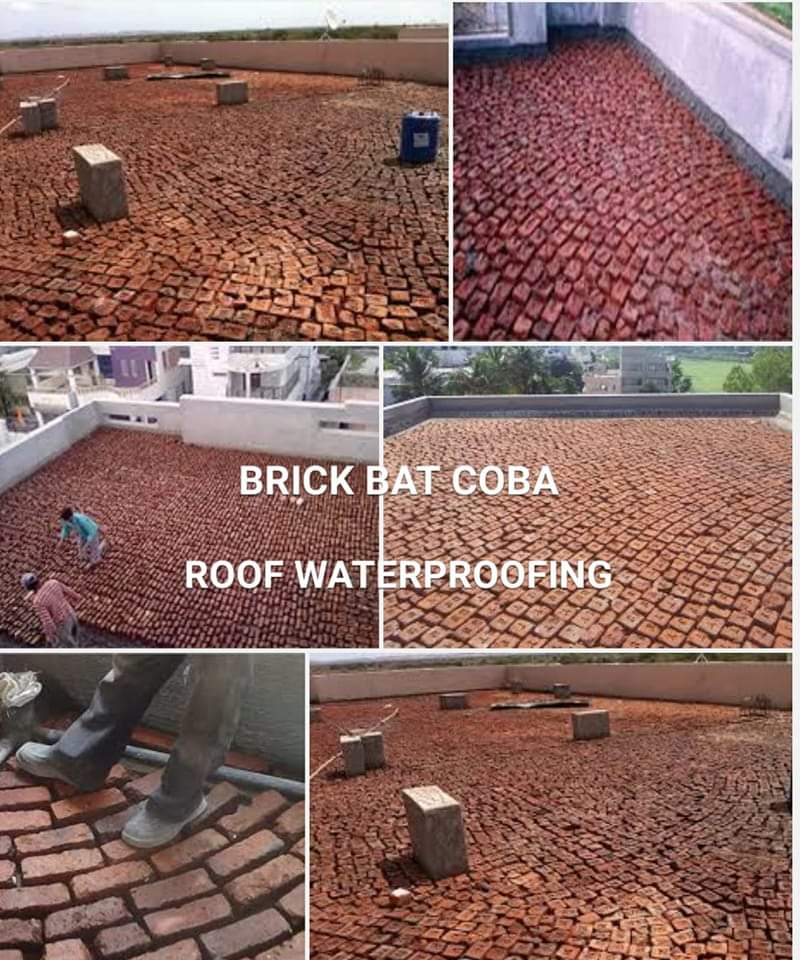


Brick bat coba methodology
Best methodology explain by everdry waterproofing